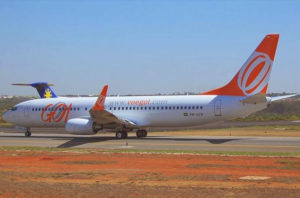
GOL Boeing 737-800
Photo credit: Paul Hunter Alvarenga (http://tinyurl.com/adz8xujh)
What caused the business jet to collide with the Boeing 737 in 2006?
In 2006, a tragic collision occurred between a business jet and a Boeing 737. This event defied the typical conventions of air travel, where aircraft rarely collide head-on during cruise due to established safety procedures, notably the semi-circular rules.
These rules require odd flight levels for aircraft flying on easterly tracks between 0° and 179° and even flight levels for those flying westerly between 180° and 359°, aiming to prevent mid-air collisions.
However, on September 29, 2006, a devastating collision took place due to a series of errors involving air traffic controllers and pilots, resulting in a Boeing 737-800 operated by GOL and an Embraer Legacy 600 business jet being on a collision course.
Remarkably, the Legacy jet, survived the crash and landed safely in a military airfield.
On that fateful day, the Boeing 737-800 was following a south-eastly route at Flight Level 370 (37,000 feet). In the opposite direction, the Legacy 600 was also cleared to maintain Flight Level 370 since it was initially flying in an easterly direction.
However, the business jet was supposed to descend to Flight Level 360 upon changing its heading to the west. Unfortunately, due to mishandling by the Brazilian air traffic controllers, this did not occur as planned.
This tragic sequence of events ended in the Boeing 737 colliding with the Embraer Legacy 600 business jet. The Legacy’s wingtip sliced off approximately half of the Boeing 737’s left wing, leading to its catastrophic breakup and the tragic loss of 154 lives.
The subsequent investigations into this disaster gave rise to conflicting findings from the US National Safety Transportation Board (NSTB) and Brazil’s Air Accidents Investigation Authority, CENIPA.
The Brazilian authority asserted that the accident resulted from a combination of air traffic control errors and mistakes made by the American pilots on the Legacy, including their failure to recognize that their Traffic Collision Avoidance System (TCAS) was not activated.
In contrast, the US NTSB contended that the American pilots had acted correctly but were placed on a collision course by the actions of the Brazilian air traffic controllers. They considered the inactivated TCAS as a contributing factor rather than the direct cause.
The NTSB’s final report agreed with the Brazilian findings, concluding that the accident occurred because air traffic controllers had both planes on the same flight level, directing them towards each other.
In the aftermath of this tragedy, the two pilots were initially sentenced to 4 years and 4 months in prison but this was later commuted to community service in the United States.
However, following an appeal by the pilots, the Brazilian Supreme Court ordered them to return to Brazil to serve up their sentences.
View YouTube video Mid-air Collision Over The Amazon Rainforest – DISASTER BREAKDOWN